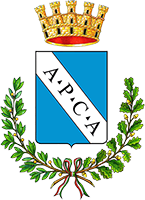
Along the current Via della Repubblica, in 1996, a stretch of the ancient paving road of the urban network of the Roman city was revealed. It was thus identified, for a pattern of approximately 100m and a width of approximately 5, a portion of the trail on Via Amerina, which entered the city from the south through Porta Romana. The Via Amerina, one of the main links with Rome already in the last decades of the 4th century BC, was the first Public street in Umbria.
Originally the road perhaps stopped at the Umbrian area of Amer, which later became Ameria; it was later extended to Tuder (Todi), Perusia (Perugia) and Clusium (Chiusi). In 241 it must have been permanently open, when it was the cardo maximus of Falerii Novi, the newly established city to replace the falisco center Veteres Falerii (Civita Castellana). In late antiquity the way had a strategic role, especially during the Greek-gothic war and the conflict between the Byzantines and Lombards.
The way entered the city center from the south of Amelia, constituting the cardo maximus of a network of roads, relatively smooth but hard to rebuild. Over time, the ancient Roman road network of Ameria has suffered changes and de-structuring: some streets have been cleared, the straight line of others discontinued, and it is therefore extremely difficult to bring out the persistence of the ancient road network, having undergone such profound changes. This initial portion of the via Amerina consisted of paving stones of limestone, placed on a bottom of splinters, fragments of pottery and clay, in turn resting on a layer of travertine, while a sewer ran below the path. In this section you can still see traces of the worn furrows due to the passage of the wheels of the chariots.
The road had to have a width greater than 5 m, and it was probably built in the last decades of the first century BC, in conjunction with the strong push towards Romanization resulting in the creation of the municipium. Further stretches of the road network have been identified within buildings, below roadways, in gardens and orchards. In general, it is difficult to establish the precise direction of the main street, which was to continue with a sinuous and broken path, as well as the minor axis, usually relevant to the urban planning of a Roman city. From the fourth century AD onwards, Ameria had in fact suffered a profound deconstruction of its urban structure, which left few traces of the ancient road network: as in other cities with Late Antique origins where the private buildings were advancing beyond the margins of roadways, orchards and gardens invaded areas that were once urbanized. The finding on of renovations to the road section and the discovery of glassy materials along Via della Repubblica show that the main road network continued to be affected by traffic and transit from the fourth century AD up to the Higher Middle Ages, even if we do not know to what degree or form.


